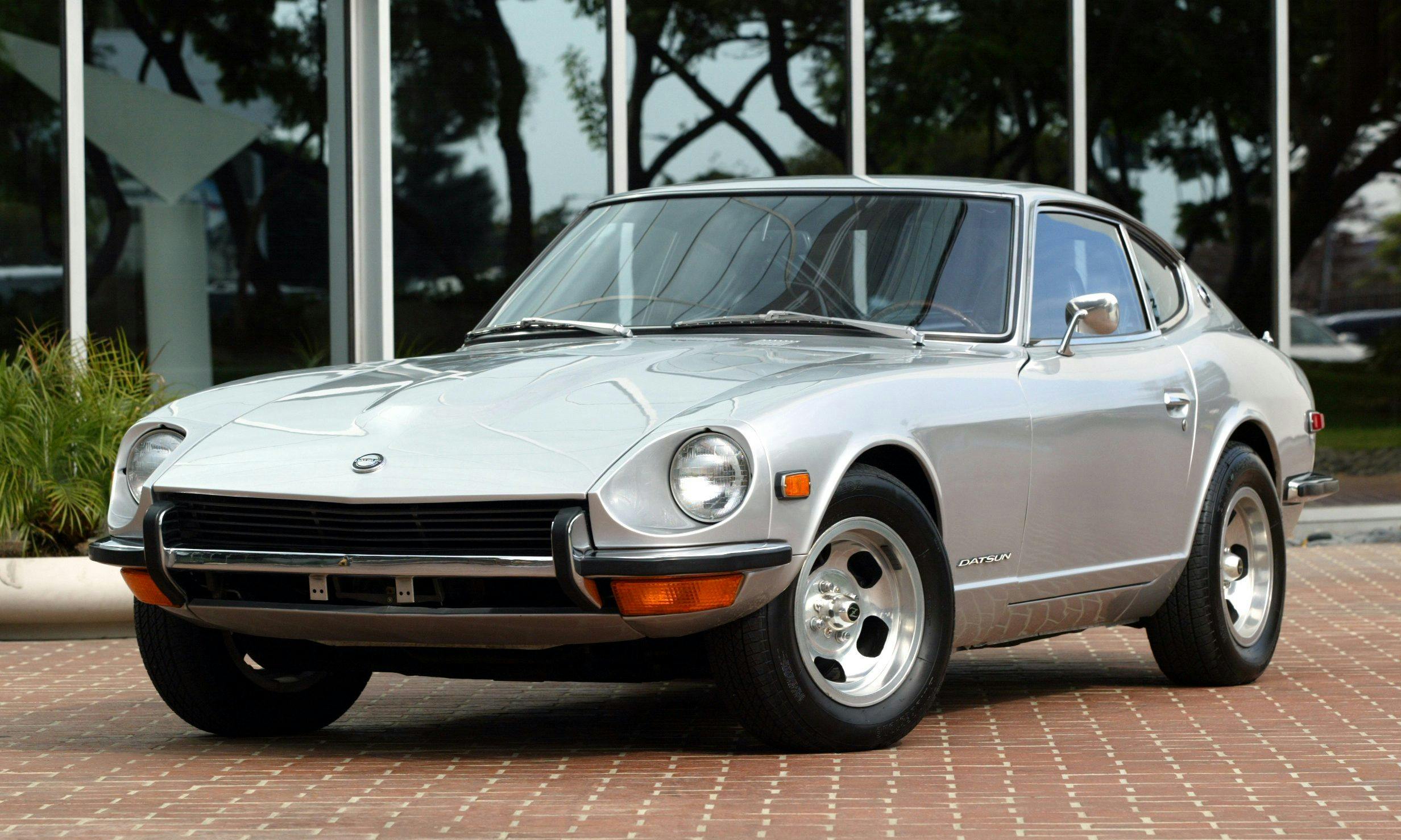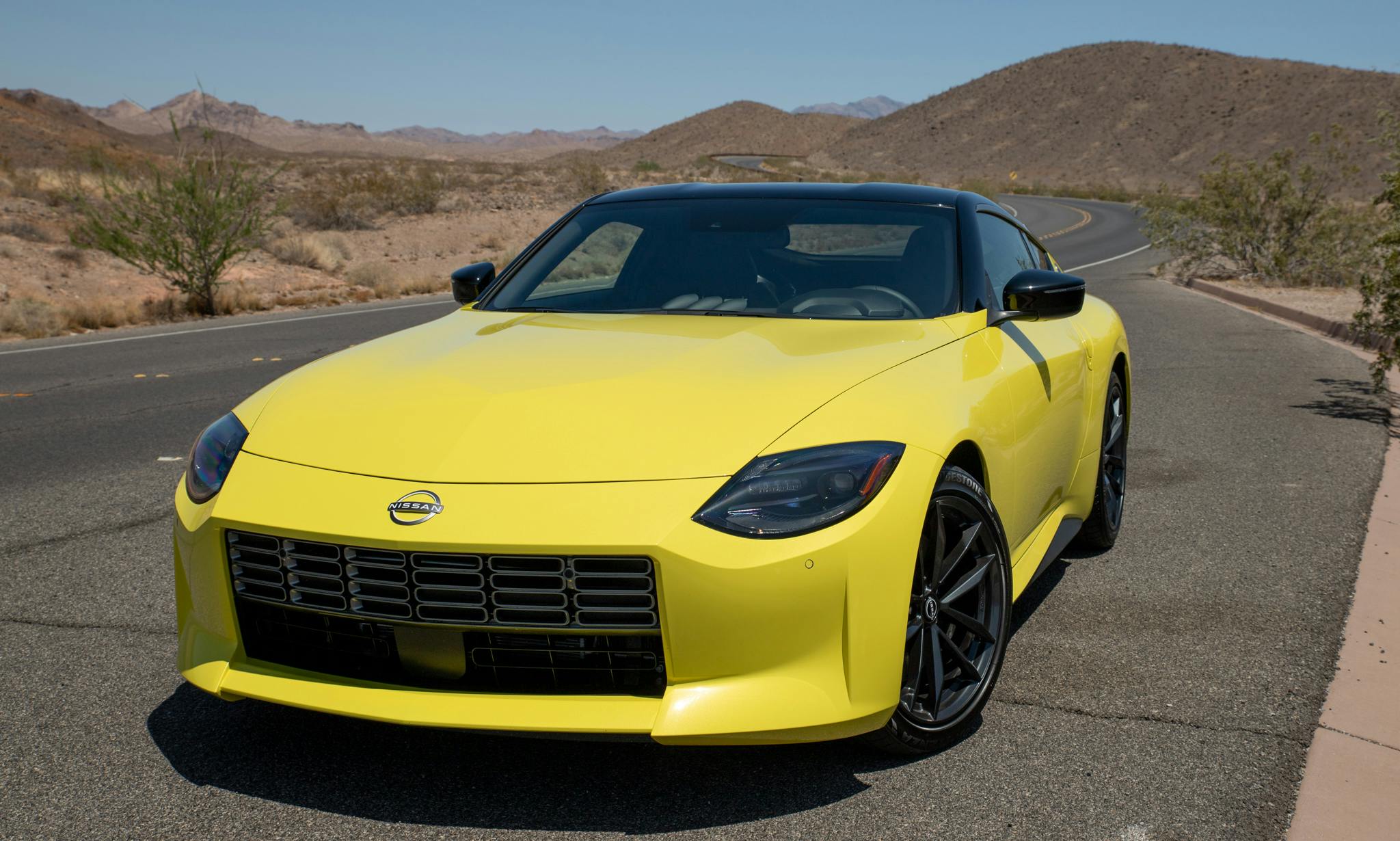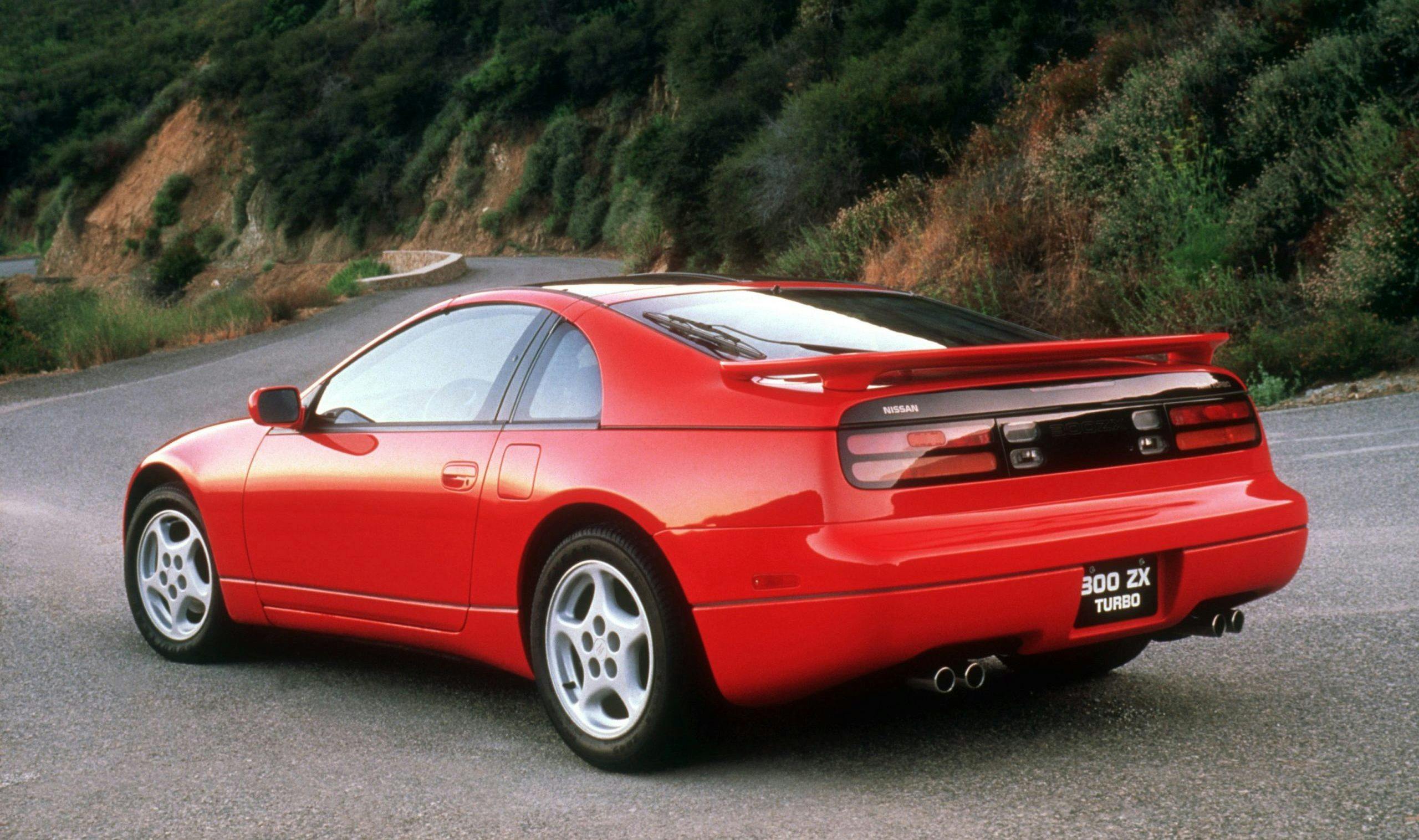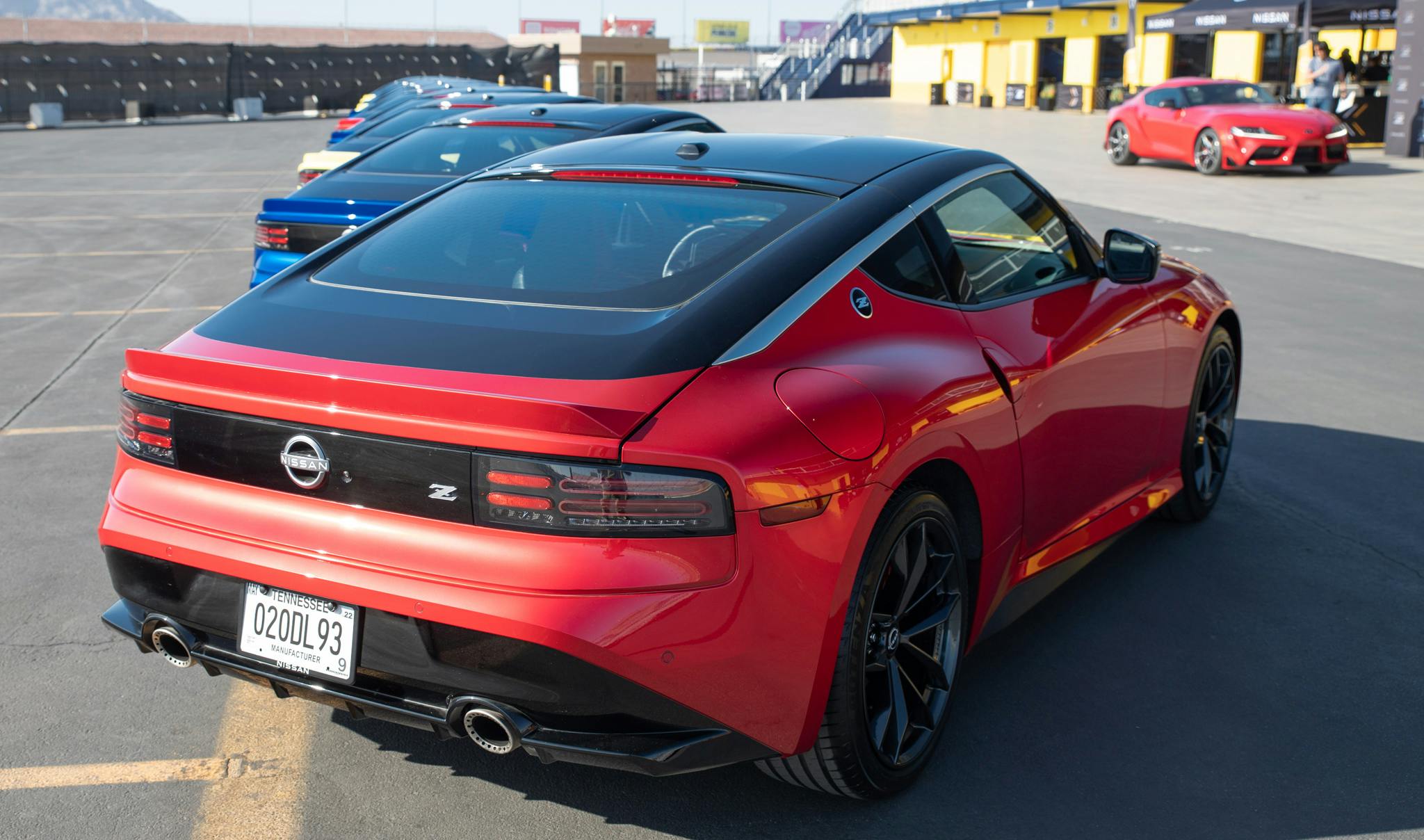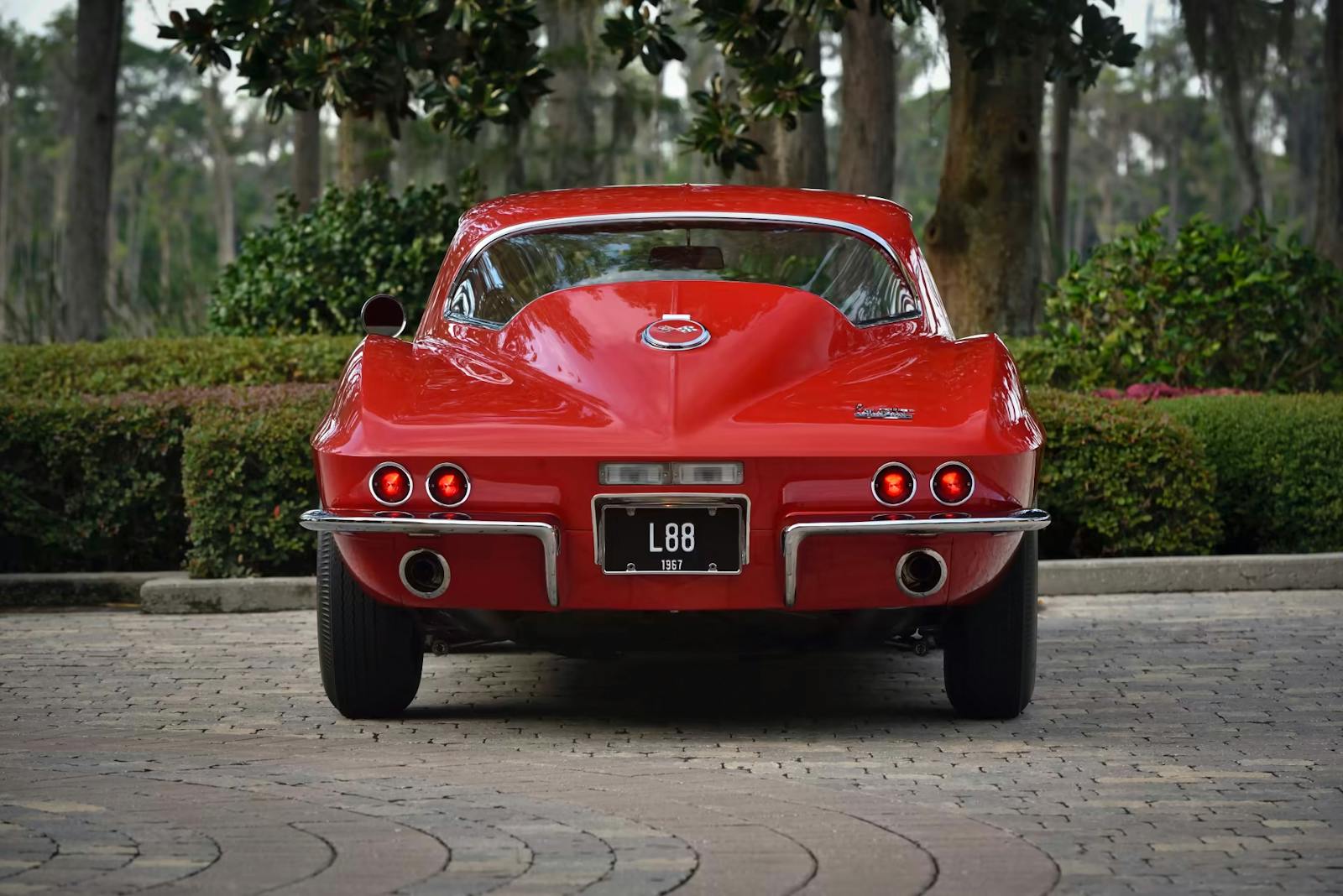The $45K Question: Would you buy a new Z or one of its collectible forebears?
One of the best things about the new Nissan Z, which I recently reviewed, is how it deftly incorporates traits of several previous Zs. In particular, it pays tribute to its earliest ancestor, the 240Z, as well as the most tech-forward iteration, the 1990–96 300ZX. It’s no mere coincidence that Nissan looked to these two generations. As Hagerty data indicate, the 240Z and 300ZX are both climbing in value and, just as important, appeal to a broad swath of car collectors.
While the 240’s design may be its most obvious gift to the new Z, it also set the tone for what a Z should offer going forward: excellent performance and driver engagement at a reasonable price. The 240 (as well as its first-generation siblings, the 260 and 280) had sports car credibility in spades, winning multiple SCCA championships throughout the 1970s. On the street it quickly became revered as fun and reliable sports car, laying the foundation for generations to come.
Early Z-car values have been on the march for some time, but they've taken a much sharper upward trajectory during the pandemic. In #2 (Excellent) condition, each of the three variations of the first-generation Z have eclipsed the new Z's base price of $39,990, and the 240 has even edged above the range-topping $52,000 Proto-Spec launch edition.
Perhaps more surprising than the price is who is driving it. You'd expect a car that made its bones in the early 1970s to appeal to baby boomers—and it sure does. Yet it also attracts a relatively large share of millennial and Gen-Z collectors, who no doubt appreciate its status as the godfather of all the Japanese enthusiast cars they grew up with in the 1980s and '90s.
Although Z-cars remained capable through the 1980s, it's the fourth generation Z32 300ZX introduced in 1990 that set a new bar for Z performance. The Turbo sported a 300-horsepower 3.0-liter twin-turbo V-6, allowing it to punch far above its weight. Also featuring variable valve timing (still a rarity in 1990) and Nissan's Super HICAS four-wheel steering, the 300ZX took a more tech-heavy approach than past generations. These features, along with a rapid strengthening of the Japanese yen against the dollar, made the Z too expensive for most sports car shoppers in its day. (The 1996 300ZX Turbo stickered for more than $40K—about $80K in today's dollars.)
Nissan hasn't forgotten that lesson and, with the new Z, foregoes the tech-forward approach of the 300ZX. It does, however, nod at its styling, presenting a modern, clean interpretation of the 300ZX's tail panel.
Chances are today's youngest sport car buyers will dig those lights. Gen-X and younger generations represent a larger portion of insureds than Boomers across the base and Turbo 300ZX. While it didn't headline a Fast & Furious movie like the Mk IV Supra, these Z-cars captured the attention of young enthusiasts throughout the 1990s. And as these young enthusiasts gain the financial wherewithal to become collectors, they have driven the 300ZX's resurgence in value.
Values across the 300ZX models languished through the early 2000s—it took almost 25 years for prices to rise on the Turbo variant while the base trims did not see a significant increase till the pandemic-fueled market. But now the Turbo in particular is rising rapidly.
The strong values and the cross-generational appeal of older Zs speak to the health of the Z brand as the latest iteration hits the market.
More to the point, though: If you have $45 grand and want to get into one of Japan's most iconic sports cars, you now have a few options: a first generation Z that created the model's identity, a '90s beast with tech and power to match, or the new Z that builds off both. Which would you choose?

